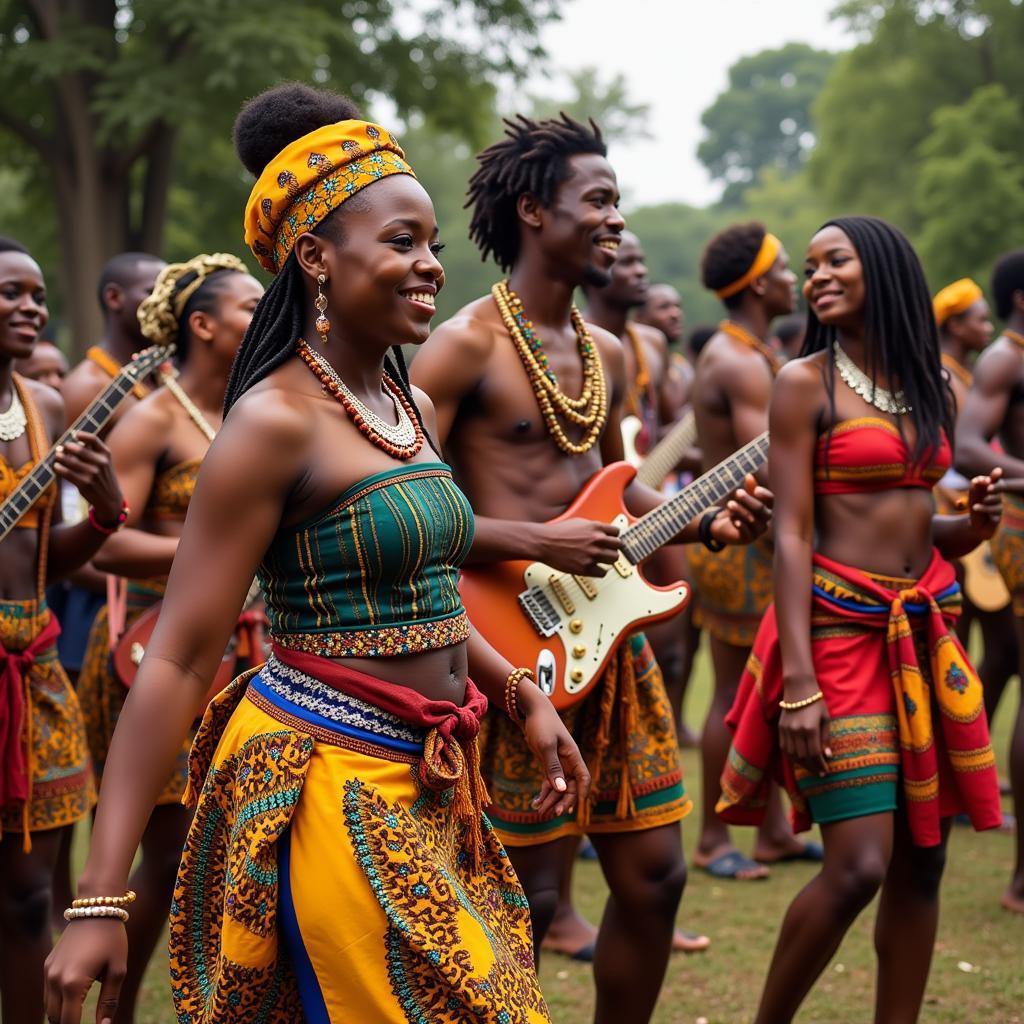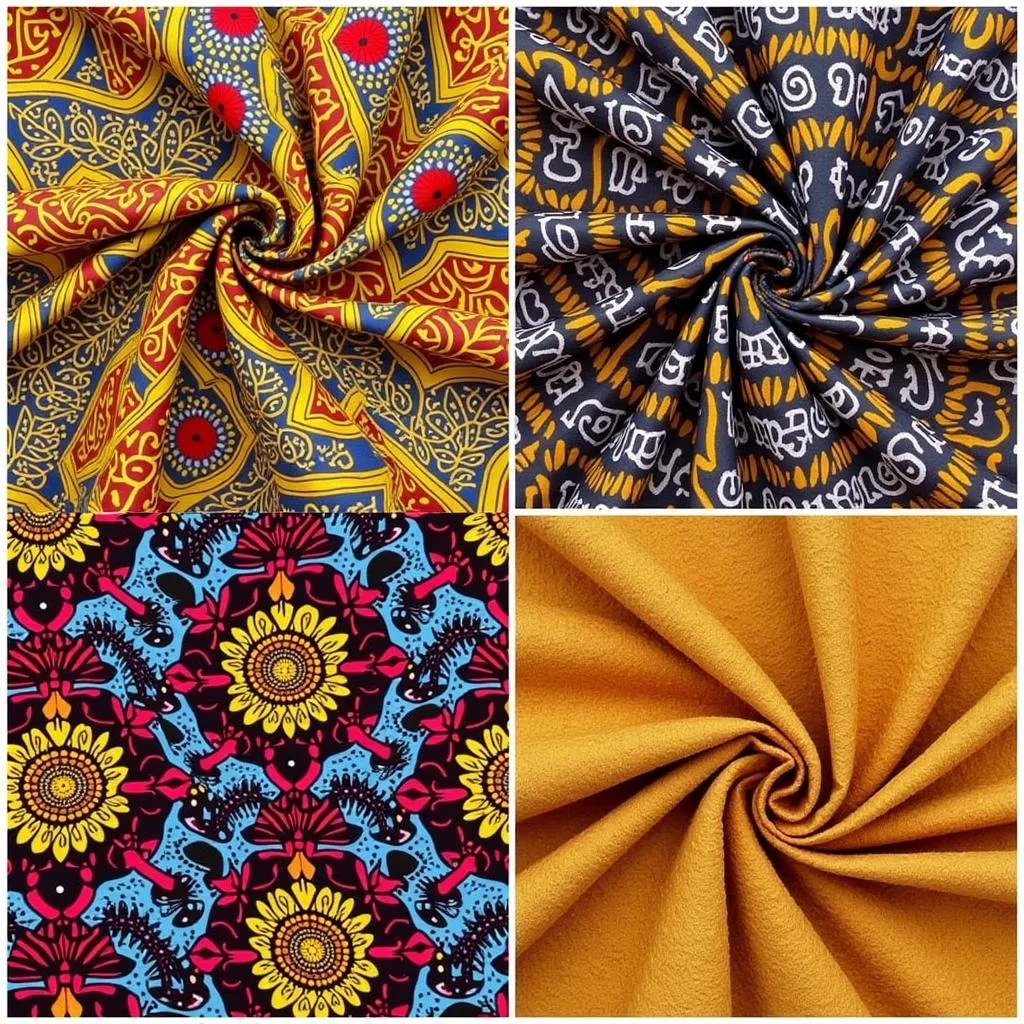Capturing the Soul of Africa: A Guide to African Landscape Photography
African Landscape Photography is more than just pointing a camera at a scenic view. It’s about capturing the soul of a continent, telling stories through breathtaking vistas, and revealing the raw beauty and diversity of Africa’s landscapes. From the vast savannahs teeming with wildlife to the towering peaks of Kilimanjaro, the opportunities for stunning photography are endless. This guide will delve into the art of African landscape photography, providing tips, techniques, and insights to help you capture unforgettable images.
Understanding the African Landscape
Africa boasts an incredibly diverse range of landscapes, each with its own unique charm and photographic potential. The Sahara Desert, with its rolling sand dunes and stark beauty, presents a different challenge compared to the lush rainforests of the Congo Basin. Understanding the nuances of each environment is crucial for effective landscape photography. Consider the light, the textures, and the colors that define each location. Are you shooting the vibrant hues of a bustling market or the serene blues and greens of a coastal oasis?
After exploring the bustling markets, consider capturing the serene beauty of coastal regions. african beautiful images offers a glimpse into the diversity of African landscapes, from bustling cityscapes to tranquil natural scenes.
Essential Gear for African Landscape Photography
While a high-quality camera is important, it’s not the only piece of equipment you’ll need. A sturdy tripod is essential for capturing sharp images, especially in low-light conditions. Wide-angle lenses are ideal for capturing vast landscapes, while telephoto lenses allow you to isolate specific elements within a scene. Consider investing in polarizing filters to reduce glare and enhance colors, and neutral density filters to control the amount of light entering the lens, allowing for longer exposures.
What camera should I bring for African landscape photography? A full-frame DSLR or mirrorless camera with interchangeable lenses is recommended.
Mastering the Light in Africa
Light is the most crucial element in landscape photography. The golden hours of sunrise and sunset provide the most dramatic lighting, casting long shadows and bathing the landscape in warm, rich tones. Midday sun can be harsh and create unwanted contrast, so it’s often best to avoid shooting during these hours. Overcast days can also create beautiful, diffused light, ideal for capturing the subtle details of a scene.
Capturing the essence of African beauty can be found in portraits too. Check out this african baby photo amazed for a different perspective on capturing the spirit of Africa.
Composition Techniques for Stunning Landscapes
The way you compose your shot can make or break a photograph. The rule of thirds is a fundamental principle that can help you create balanced and visually appealing images. Imagine dividing your frame into nine equal sections using two horizontal and two vertical lines. Placing key elements along these lines or at their intersections can create a more dynamic composition. Leading lines, such as roads, rivers, or fences, can draw the viewer’s eye into the scene. Experiment with different perspectives and angles to find the most compelling composition.
Where can I find inspiration for African landscape compositions? Studying the work of renowned landscape photographers, especially those specializing in African landscapes, can provide valuable inspiration.
Telling Stories Through Your Images
African landscape photography isn’t just about capturing beautiful scenery; it’s about telling stories. Look for elements that add depth and meaning to your images. Include people, animals, or cultural artifacts to convey the human element and the rich history of the land. Capture the essence of daily life, the struggles, the joys, and the unique cultural expressions that make each region special.
Interested in exploring the vibrant world of African fashion? african american street style provides a captivating look into contemporary fashion trends. Explore the diverse expressions of style that reflect the rich cultural tapestry of Africa.
Conclusion
African landscape photography is a rewarding experience that allows you to connect with the raw beauty and cultural richness of this diverse continent. By mastering the technical aspects of photography and understanding the unique characteristics of the African landscape, you can capture images that not only showcase its stunning scenery but also tell compelling stories. So pack your bags, grab your camera, and embark on a photographic journey to capture the soul of Africa.
FAQ
- What is the best time of year to visit Africa for landscape photography?
- What are some essential safety precautions to take while photographing in Africa?
- What are the ethical considerations for photographing wildlife in Africa?
- How can I edit my African landscape photos to enhance their impact?
- What are some tips for capturing the Milky Way in the African night sky?
- How can I protect my camera equipment from dust and humidity in Africa?
- What are some recommended photography tours or workshops in Africa?
Commonly Encountered Situations
- Dealing with extreme weather conditions: Be prepared for both heat and rain, and protect your equipment accordingly.
- Respecting local customs and traditions: Always seek permission before photographing people or sacred sites.
- Navigating challenging terrain: Research your locations beforehand and be prepared for difficult hiking conditions.
Related Questions and Articles
- How to Photograph Wildlife in Africa
- Tips for Capturing the Beauty of African Sunsets
- The Best National Parks for Photography in Africa
Contact us for any assistance: Phone: +255768904061, Email: kaka.mag@gmail.com, Address: Mbarali DC Mawindi, Kangaga, Tanzania. We have a 24/7 customer service team.


